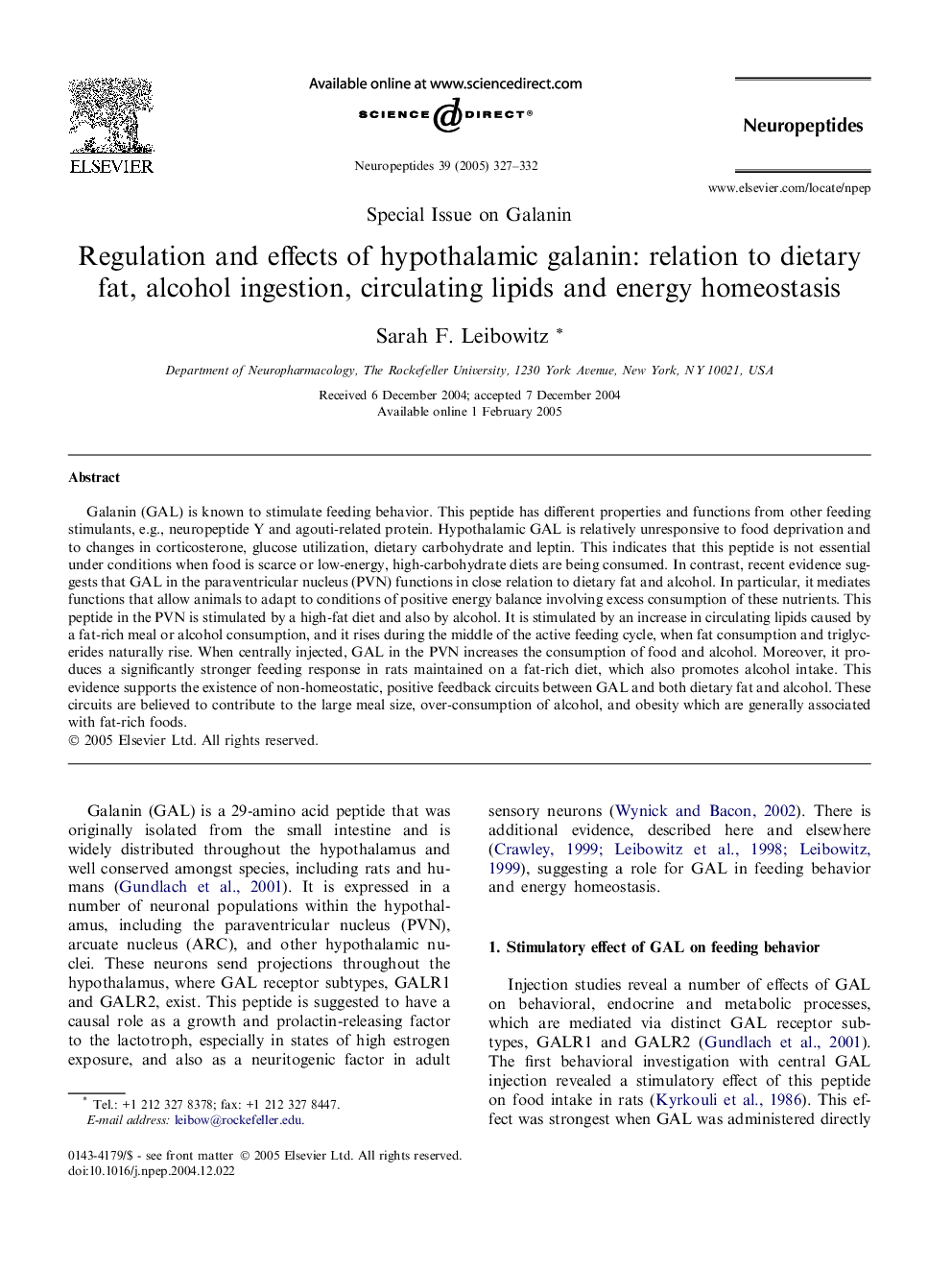| Article ID | Journal | Published Year | Pages | File Type |
|---|---|---|---|---|
| 9118819 | Neuropeptides | 2005 | 6 Pages |
Abstract
Galanin (GAL) is known to stimulate feeding behavior. This peptide has different properties and functions from other feeding stimulants, e.g., neuropeptide Y and agouti-related protein. Hypothalamic GAL is relatively unresponsive to food deprivation and to changes in corticosterone, glucose utilization, dietary carbohydrate and leptin. This indicates that this peptide is not essential under conditions when food is scarce or low-energy, high-carbohydrate diets are being consumed. In contrast, recent evidence suggests that GAL in the paraventricular nucleus (PVN) functions in close relation to dietary fat and alcohol. In particular, it mediates functions that allow animals to adapt to conditions of positive energy balance involving excess consumption of these nutrients. This peptide in the PVN is stimulated by a high-fat diet and also by alcohol. It is stimulated by an increase in circulating lipids caused by a fat-rich meal or alcohol consumption, and it rises during the middle of the active feeding cycle, when fat consumption and triglycerides naturally rise. When centrally injected, GAL in the PVN increases the consumption of food and alcohol. Moreover, it produces a significantly stronger feeding response in rats maintained on a fat-rich diet, which also promotes alcohol intake. This evidence supports the existence of non-homeostatic, positive feedback circuits between GAL and both dietary fat and alcohol. These circuits are believed to contribute to the large meal size, over-consumption of alcohol, and obesity which are generally associated with fat-rich foods.
Related Topics
Life Sciences
Biochemistry, Genetics and Molecular Biology
Endocrinology
Authors
Sarah F. Leibowitz,
